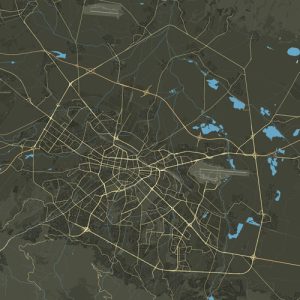“Obelya”, a district in Sofia, Bulgaria, stands as a testament to its rich historical roots while embracing modern urban living. This historic village, now a thriving neighborhood, is situated in the northwestern part of the city and is an integral part of the Vrabnitsa district within the capital municipality.
Bordered by the residential complexes “Obelya 2” to the northeast and “Obelya 1” to the southeast, the industrial zone “Modern Suburb” to the southwest, and expansive agricultural lands to the northwest, Obelya enjoys a diverse geographical setting.
Primarily characterized by large single-family houses, the neighborhood’s architectural landscape reflects a harmonious blend of tradition and modernity. This mix contributes to Obelya’s unique charm and appeal, making it a distinctive area within Sofia.
Delving into its historical roots, Obelya reveals the remnants of a large Roman suburban villa on its territory. This archaeological site includes a well-organized living area and extensive outbuildings surrounding a quadrangular courtyard. Unfortunately, the villa met its demise during the campaigns of Attila’s Huns in 441-447, marking a significant chapter in the area’s history.
Obelya officially became part of the capital as a district in 1961, aligning with the adoption of the Law on the General Town Planning Plan of the City of Sofia. This integration marked a pivotal moment in the district’s development, shaping its trajectory as an integral part of the capital.
The “Obelya” district boasts cultural and religious landmarks, such as the “Assumption” church, constructed by the skilled Debar craftsman Georgi Novakov Dzongar. Noteworthy is the consecration of the “Saint John the Baptist” church, adjacent to the “Assumption,” conducted by Bishop John Znepolski on January 7, 2008.
Obelya prioritizes education and healthcare, with institutions like the “Hristo Botev” elementary school, “Adam Mickiewicz” ODZ, and the “Arlekino” CG and “Prosveta” community center serving the community. This commitment to educational and healthcare infrastructure underscores the district’s dedication to the well-being and development of its residents.
Facilitating transportation, several bus lines, including No. 26, 30, 31, 81, and 150, connect Obelya to the broader city, ensuring accessibility and connectivity. Additionally, the presence of retail outlets, exemplified by a store from the “Fresh Market” chain, caters to the daily needs of residents, further enhancing the neighborhood’s livability.
In essence, Obelya stands as a living testament to Sofia’s historical and cultural tapestry, seamlessly blending the echoes of its past with the vibrant pulse of contemporary urban life. This district encapsulates the essence of Sofia’s continual growth and evolution.

